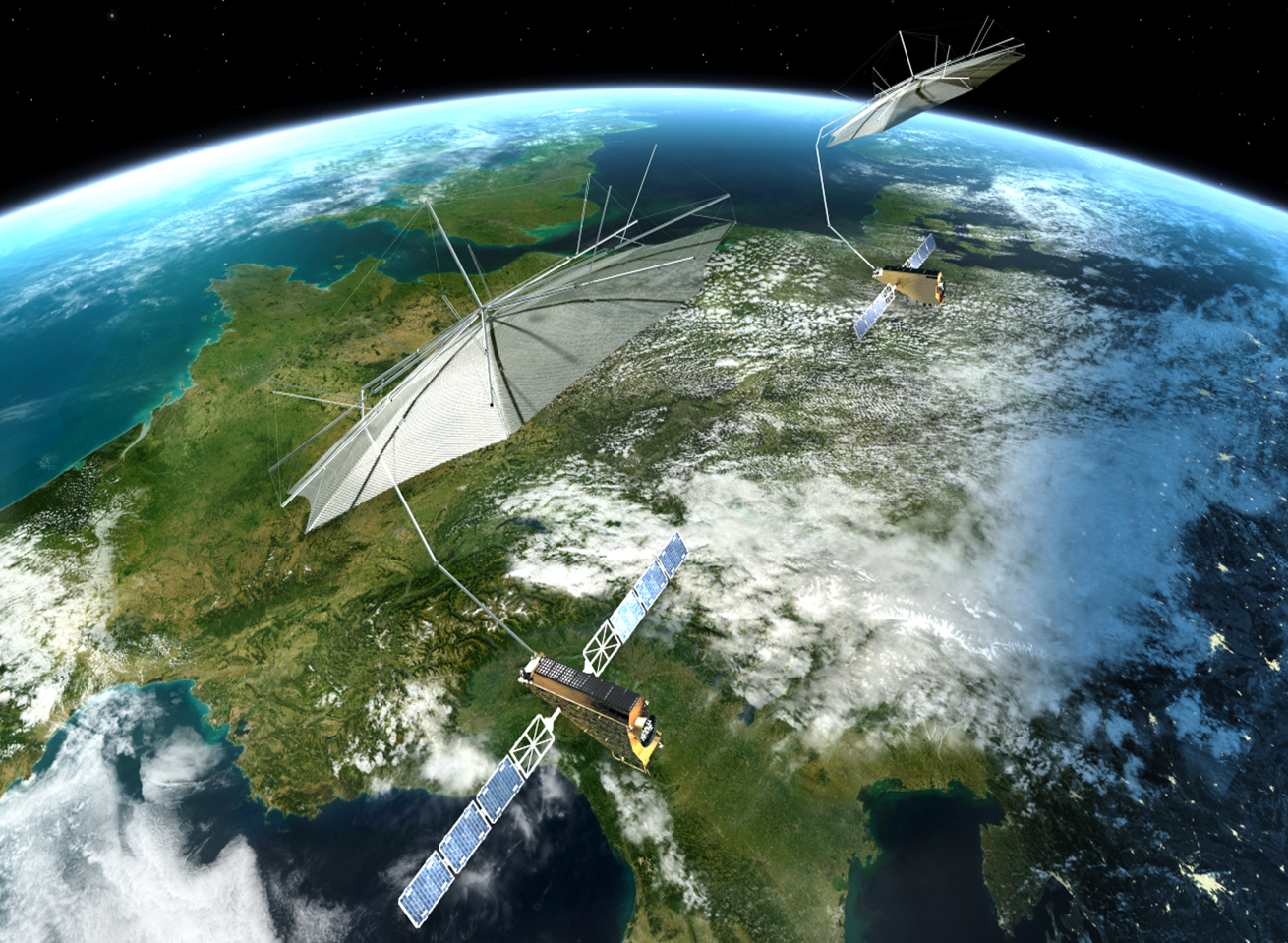
December 17, 2018 - 12:15 Aula Lettura al II Piano (floor) DIET
Dr. Michelangelo Villano
Microwaves and Radar Institute, German Aerospace Center (DLR)
Abstract
Synthetic aperture radar (SAR) has proven to be a key remote sensing technique for Earth observation. While conventional SAR systems are limited in that a wide coverage can only be achieved at the expense of a degraded resolution, the developements of the last decades based on digital beamforming (DBF) and multiple aperture signal recording overcome this limitation and allow future missions, such as Tandem-L, to deliver weekly high-resolution global images of our planet, which can be used to quantify several essential climate variables.
At the same time the requirements for even more frequent temporal sampling or simultaneous multi-baseline observations and the desire to keep costs down call for disruptive approaches, such as the deployment of satellites in higher orbits or myriads of small satellites and the exploitation of distributed and fractionated SAR techniques, which would spread the on-going NewSpace revolution to SAR remote sensing.
Biography
Michelangelo Villano received the B.Sc. and M.Sc. degrees (Hons) in telecommunication engineering from the University of Rome “La Sapienza,” Rome, Italy, and the Ph.D. degree (Hons) from the Karlsruhe Institute of Technology, Karlsruhe, Germany, in 2006, 2008, and 2016, respectively.
He was a young graduate trainee with the European Space Research and Technology Center, European Space Agency, Noordwijk, The Netherlands, from September 2008 to August 2009, where he developed processing algorithms for ice sounding radar. Since September 2009, he has been a research scientist with the Microwaves and Radar Institute, German Aerospace Center (DLR), Oberpfaffenhofen, Germany, where he works on innovative synthetic aperture radar (SAR) concepts for Earth observation. From April to June 2017 he was a visiting research scientist with the Communications, Tracking, and Radar Division, NASA Jet Propulsion Laboratory, Pasadena, CA, USA, where he analyzed novel acquisition modes for the NASA-ISRO SAR (NISAR) instrument. In December 2018 his proposal “NewSpace SAR: Disruptive Spaceborne SAR Technologies for Frequent Earth Monitoring” was selected by the DLR Executive Board within the DLR Junior Research Group/Assistant Professorship Sponsor Program and, as of 2019, he will be leading the newly founded research group “NewSpace SAR” at the DLR Microwaves and Radar Institute. He has authored nearly 70 research articles in peer-reviewed journals and international conference proceedings, and he is the holder of three patents in the field of synthetic aperture radar.
Dr. Villano was the recipient of the IEEE Geoscience and Remote Sensing Society Letters Prize Paper Award in 2015 and 2017, the Award as Young Scientist of the Foundation Werner von Siemens Ring 2017, the ITG Dissertation Award 2017, the DLR Science Award 2016, the Student Paper Award at the Asia-Pacific Conference on Synthetic Aperture Radar 2015, Marina Bay Sands, Singapore, and the First Place Student Paper Award at the European Conference on Synthetic Aperture Radar (EUSAR) 2014, Berlin, Germany. He has served as guest editor for the special issues “Advances in Antenna Array Processing for Radar 2014” and “Advances in Antenna Array Processing for Radar 2016” of the International Journal of Antennas and Propagation, and as a member of the Technical Program Committee of the EUSAR Conference since 2016.